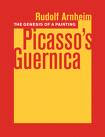Colin Gunton argues, in his book Christ and Creation, that the relationship between Christ and Creation must be understood within the context of the Triune relationships. He writes, "It is because God the Father creates through the Son and Spirit, his two hands (Irenaeus), that we can conceive a world that is both real in itself, and yet only itself in relation to its creator.” The concept of Kenosis, the self-emptying of God, is typically empoyed to relate the Son of God, the second person of the Trinity, to Creation, and in what follows are some interesting comments on the relationship between Christ, Kenosis, and Creation:
“If the self-emptying is seen as the expression of the divine being rather than its depotentiation, it is a different matter altogether. The concept is used, for example, in Cyril of Alexandria. ‘The emptying was a voluntary reduction to our level, undertaken as an act of pure love … : “He who fills all things lowered Himself to emptying.” What is claimed is that the eternal relatedness of the Son to the world here takes, through the Spirit, a particular and unique form. Because the Father created and upholds the world in being through the Son, it is ontologically appropriate, so to speak, for the Son to be the one who takes on flesh. The one who holds in being the realms of time and space enters their confines in order to renew them. In that respect, the emptying is an expression at once of the love of the Son and of his being in relation with that which was created through and is upheld by him. Kenosis is therefore one concept by which we may express the way in which the eternal Son related himself to that which is not God—to the creation.”
Gunton goes on to say that “It is doubtful whether the continuity between creation and incarnation should be expressed by calling the activity of divine creation also an act of Kenosis. It is one thing to give to the world a being and form, another to enter its fallen structures to renew them.” I have two comments about this statement.
First, Gunton seems to imply earlier that creation and kenosis are closely linked when he writes “the emptying is an expression at once of the love of the son and of his being in relation with that which was created through and is upheld by him.” How does one separate the love of God and the creativity of God? W. H. Vanstone writes, “Christianity should have no hesitation in attributing to God that authenticity of love which it recognizes in Christ – in attributing to the Creator that authenticity of love which it recognizes in the Redeemer.” The argument here is that the self-emptying of Christ, as implied in the incarnation and crucifixion, is indicative of a love for creation that God has in general.
Second, although the incarnation suggests the consummation of God’s creation, it does not ultimately reach that fulfillment, which is God dwelling with his creature in the New Creation. If “God dwelling with His creation” has been the final goal all along, then all of God’s creative activities could be called Kenotic for they strive toward intimate relatedness with Creation. The concept of Kenosis can be employed to describe the free relatedness of God to creation, because it is not only the Son who wishes to dwell with His creatures.
Wednesday, January 7, 2009
Subscribe to:
Post Comments (Atom)




No comments:
Post a Comment